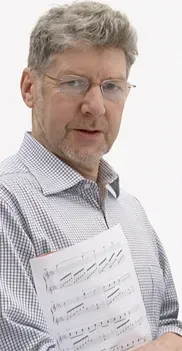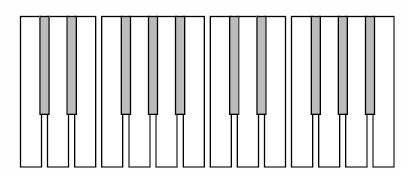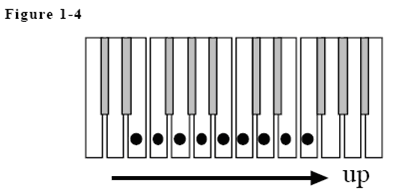
John Barton's Music Logic Lessons Online
Module 1 - Lesson 01
Videos and excercises below
Please do not share this Link
Book One
Book One
For Module One Parts 1 & 2 you will need a copy of the Music Logic Book One. see below
You can download in PDF format here. <------
Or
order a hard copy via [email protected]
0.0 Getting Started
Join the Music Logic Facebook Group
It is highly recommended that you join the exclusive Music Logic Teachers and Students Facebook Group. Here you will have access to discussion groups, possible Q&A sessions when announced and other content to make your path through your course easier.
Click here for access. <------
Only students and teachers have access to this group.
Don’t have a keyboard yet?
No problem. Simply download this paper keyboard, print it off and piece it together. It’s a great replacement for an 88 key keyboard while you are getting started on your Music Logic journey.
Click here to download and save. <------
Introduction to Module One
Throughout this Module we will be using a keyboard/piano as the demonstration instrument simply because most people find it easier to translate the written musical notation to the wide range of the piano. As you progress you will be able to use your new understanding of musical notation to play other instruments.
Lesson one is the most complex – it involves getting started – getting to know your instructor – getting comfortable with the system – etc.
We are going to start with a composition called ‘Falling Leaves’ this is a ‘hands on’ piece. We then follow with some nitty gritty basic theory of reading music notation, finishing with some finger exercises.
1.0 The Music Logic Books
1.1 Layout of the Piano
Video 1.1 Sustaining Pedal
Figure 1-1
 Notice that the keys are white & black
Notice that the keys are white & black
Also notice that the black keys come in groups of twos & threes
A piano usually has 3 pedals at its base. Electronic keyboards usually only have one. This is called the “sustaining pedal” on a keyboard. The right pedal on a piano is the sustaining pedal.
Right from the start with first performance piece “Falling Leaves” you will be getting to use the sustaining pedal.
Exercise: Play a number of keys across the entire range of the keyboard and notice the difference between the sound and the length of the note both with and without the sustaining pedal being depressed.
1.2 Falling Leaves - Performace Piece
Let's get started on your first hands on Piece 'Falling Leaves'
Video 1.2 Falling Leaves (hands on Piece)
1.3 Nine Notes
Video 1.3 Nine Notes
Getting started with reading music notation>
These notes should be used to clarify the video 1.3 Nine Notes below
Stave
Stave is a set of 5 lines and 4 spaces
Each line and each space represents a white key
It follows that the stave can accommodate 9 notes
(5 lines + 4 spaces = 9 notes)

9 notes going up

9 notes going down
Exercise 1.3: Practice playing the keys as demonstrated in the video clip




